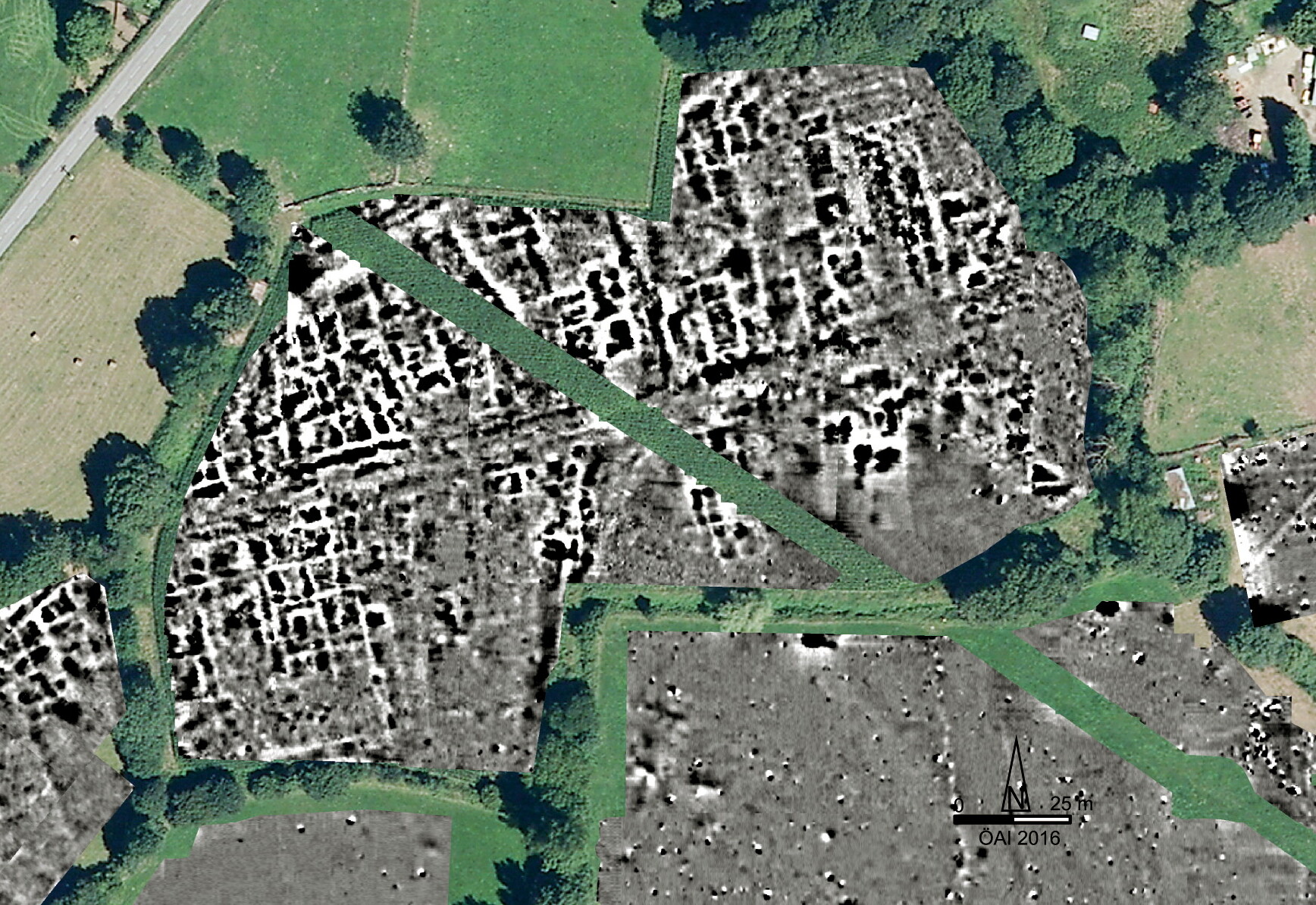Haute-Garonne: Transit Routes and Military Presence
The priority project on the transit routes and the military presence in the region Haute-Garonne is focused on the important Colonia Lugdunum Convenarum. Primarily the military camps of Lugdunum Convenarum, its strategic importance and its integration into the ancient settlement area are being studied.
Lugdunum Convenarum (Saint-Bertrand-de-Comminges) was a colonia of the early Augustan period located along the border between Gaul and Hispania and goes back to an oppidum founded in 72 BCE by Pompeius. The favorable strategic location on the River Garonne, navigable from Lugdunum, as well as situated along the trade routes passing over the Pyrenees, part way between the Mediterranean and the Atlantic, played a part in the preeminent importance of the city as a transport hub of supraregional communication routes and as commercial center.
Lugdunum Convenarum: urban planning and integration into the Roman road network
Numerous public buildings constructed since the first half of the 1st century CE, such as a large forum (forum novum) and a complex macellum on the forum vetus (boarum), several temples, a theater as well as three bath complexes of considerable size (3,120 m2, 2,940 m2, 700 m2) bear witness to its incredible importance as central town, customs station, and trading site on the edge of the mining area of the Pyrenees.
Fieldwork since 2015
As part of the priority project mainly non-invasive field archaeological methods (geophysical survey with magnetics and radar, susceptibility measurements, field surveys, and geodetic documentation of buildings) but also invasive methods, such as geological corings, metal detector surveys, and small-scale excavations, have been employed for the exploration of fundamental questions on the city history.
Since 2015 the extensive geophysical measurements provided a higher concentration of information on the urban infrastructure and network of routes and a remarkable increase in monumental buildings of public nature as well as private buildings of varying type is apparent. This completely changed view of the ancient city map is also the result of a survey of the necropoleis initiated in cooperation with the Université de Lille/HALMA and sheds new light on the suburban region.
Lugdunum Convenarum: Military camp
A military camp 2.7 ha in size and in the immediate vicinity of the center of civil Colonia Lugdunum Convenarum has so far only been studied through small-scale trenches. Through the geophysical surveys carried out by the OeAI, its fortification with protruding square towers as well as the complex interior construction have for the first time been documented in detail. Based on the fortification architecture direct comparisons can be drawn with complexes such as the Castra Albana by Rome or also with the contemporary camps of the Legio II Italica. Here the research in the Haute-Garonne is connected with the priority project on the Legio II Italica in Noricum and on the quick succession of late Antonine-Severan structures of the three legionary camps of Ločica (Slovenia), Enns-Lauriacum, and Albing (Austria).

![[Translate to English:] Lugdunum Convenarum, geophysikalische Prospektion im Stadtgebiet (Foto: ÖAW-ÖAI/S. Groh)](/fileadmin/_processed_/9/5/csm_Haute-Garonne_Transitrouten_1_cf16842a41.jpg)
